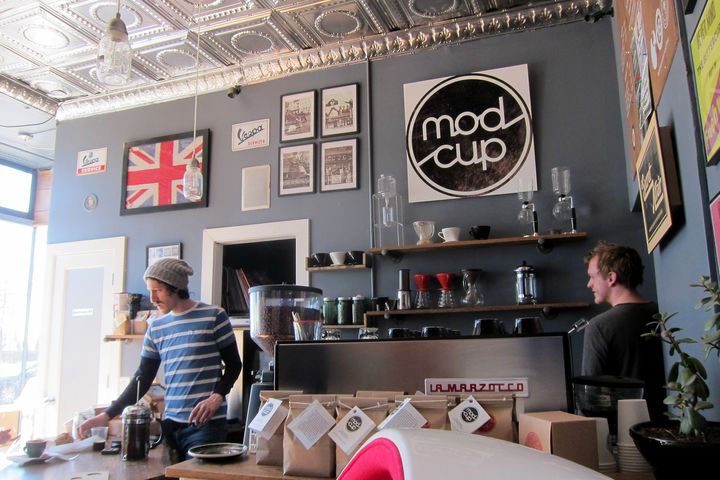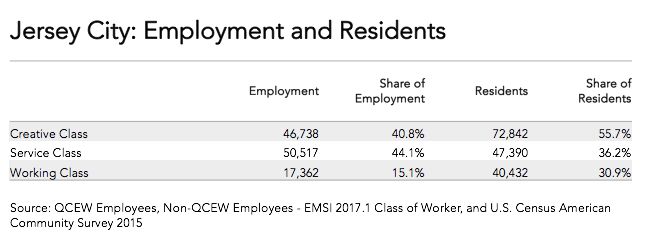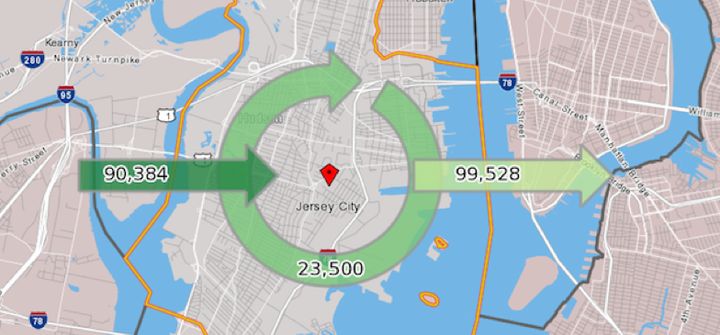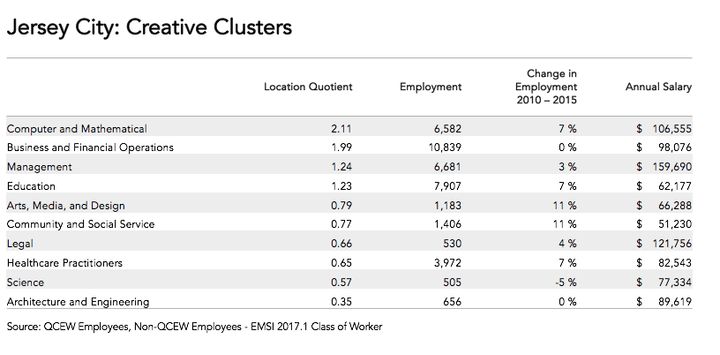
More shops and eateries like Modcup Coffee Company are calling Jersey City home, appealing to the city’s growing Creative Class. But, can Jersey City hold on to its affordability?
Just as renting in Brooklyn seems to have finally reached a tipping point, another community across the water from Manhattan is attracting well-heeled Chinese investors and millennial upstarts in troves. Registering a five-year population gain of 4.8 percent, Jersey City outpaced all five New York boroughs and the entire state of New Jersey in the past five years. Thanks to affordable rents and an increase in pedestrian-friendly cultural amenities, the New York Times reports that apartment-hunters no longer view Jersey City as a “gritty town on the wrong side of the Hudson.”
While Wall Street professionals and foreign investors have flocked to the Jersey City waterfront since the turn of the century, Manhattan-based tech companies are now moving to inner-city neighborhoods like Journal Square to recruit skilled, educated talent. With 12,861 H-1B visa holders comprising 11.2 percent of its entire workforce in 2015, Jersey City offers tech companies a competitive hiring advantage and low-cost, data-ready operating environment.
As Jersey City evolves into a live-work-play locale, will it be able to retain its affordability and diversity?
With that question in mind, I worked with Joe Wang, a student researcher at the Urban Lab and senior-year undergraduate at the NYU Schack Institute of Real Estate, to provide a comprehensive breakdown of the city’s creative class structure.

Jersey City’s knowledge-based economy consists of 46,738 creative class workers—professionals who make a living in arts and entertainment, business and finance, and science and technology industries. Roughly 9 percent of the city’s entire workforce is employed in business and financial operations alone. Out of 264,000 residents, just under half are creative class workers.
Another 44 percent of Jersey City workers are employed in low-skill, service-based occupations such as food preparation and service, retail trade, and personal care. Nearly half (49 percent) work in clerical and administrative support positions that bolster the local financial services sector, accounting for one out of every five jobs in the region.
Though Jersey City’s working class represents just 15 percent of its entire workforce, occupations in this sector are among the fastest-growing in the region. Construction jobs in the city alone have grown 27 percent over the past five years.

Note: Direction of arrow does not indicate directional inflow/outflow of workers.
The above chart represents the inflow and outflow of commuters within Jersey City. The number of residents who commute to work is slightly higher than the number of outsiders who commute into the city. Residents account for about 1 out of every 5 local jobs.
Jersey City’s Creative Clusters
Jersey City’s creative class consists of 46,738 workers. Median wages for the creative class are significantly higher in Jersey City compared to the Bronx, Brooklyn, Queens, and Staten Island. On average, creative professionals earn an annual salary of $86,081—just $7,310 less than their Manhattan counterparts. The chart below breaks down the region’s creative clusters by location quotient, employment, share of employment, and annual salary.

Business and management occupations account for 43 percent of the creative workforce in Jersey City and Manhattan. The strong local presence of financial firms in Jersey City is largely due to the waterfront’s close proximity to Wall Street and multimodal mass transit infrastructure, which provides access to major entry points in Manhattan through light-rail, waterway transport, and PATH train service. More importantly, Class A office space rents are a third cheaper in Jersey City than in Manhattan.
The city’s primary export is its computer and mathematical workforce, which is expected to grow 7 percent over the next five years. Nearly 16 percent of creative class residents are employed in this high-tech sector, compared to just 3 percent of creatives living in Manhattan. The new synergy between tech companies and the regional banking industry has also been a major economic boon for Jersey City, with institutions like Bank of New York Mellon developing their own in-house research and development teams.
With a location quotient of 2.11, the concentration of software application developers and computer systems analysts in Jersey City far exceeds the national average. Thanks to nearby research institutions like the New Jersey Institute of Technology and Stevens Institute of Technology, graduates who pursue a career in these industries earn 27 percent more, on average, than their peers in Queens.
While the size of Jersey City’s healthcare and education—or “Meds and Eds”—cluster pales in comparison to that of the Bronx or Brooklyn, jobs in these sectors are expected to grow by 7 percent over the next five years. With 8,000 workers, Jersey City’s education cluster employs nearly two out of every five creatives, while “Meds and Eds” account for over 30 percent of the city’s creative class.
Finally, just 4 percent of the creative class is employed in the combined community service and arts industries. Artists living in Jersey City’s inner-city neighborhoods face a high risk of being displaced due to lack of affordable housing. This problem worsened in 2008 after the city ultimately failed to secure subsidized housing for artist communities in the downtown Powerhouse Arts district.
Sustainable Growth is Key
While Jersey City’s affluent waterfront supports a robust finance and tech scene, decades of unequal development continue to undermine low-income residents, who lack basic pathways to middle-skill employment. Strengthening workforce development pipelines in neighborhoods like Bergen-Lafayette and Greenville—where the unemployment rate is nearly three times that of the waterfront—will help promote targeted, high-quality job growth.
Public stakeholders should also involve Jersey City’s larger community—and particularly its artists—in the planning, creation, and execution of high-quality place-branding initiatives. Low-cost initiatives like MEOWWOLF that turn vacant lots into an interactive public art exhibition can lead to significant job growth in underperforming sectors of the local economy. As developers start to build out the Zone 10 Arts District in Journal Square, it’s up to the local community to protect the diversity that made Jersey City what it is today.
